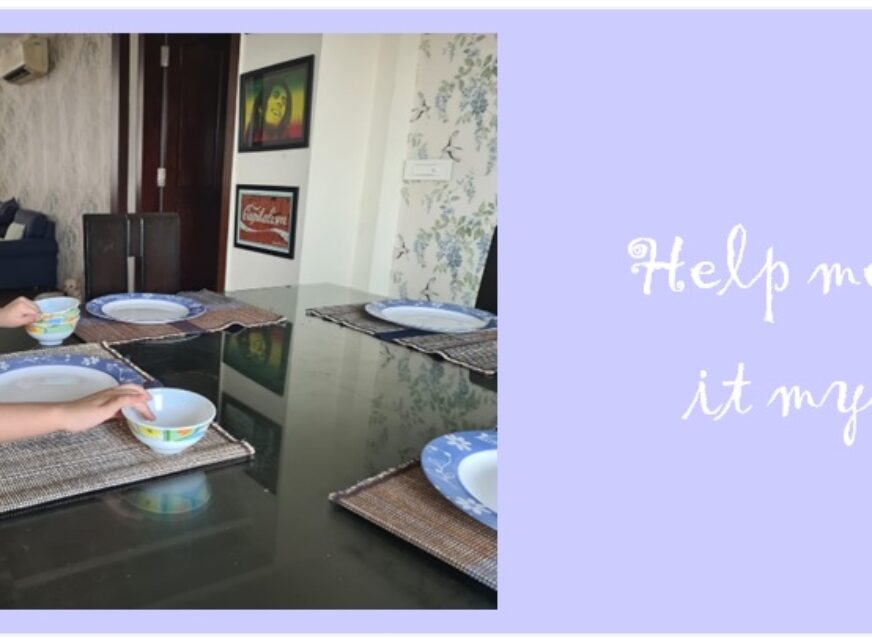
Why practical life activities are important?
Have you ever wondered why we teach children ‘rolling a rug’ and ‘pouring liquid’ in Montessori schools? And sometimes ‘shelling peas’ and ‘arranging flower’. These are called as “Exercises of Practical Life” (EPL) or simply Practical Life. The direct purpose is to make children independent with these tasks required in everyday routine without seeking any assistance from adults. Afterall, our role as parents and teachers is to empower children to be able to fulfill their own needs.
Babies and Toddlers are trying to learn every little skill during the initial years of life. These are the skills that are going to help them with daily activities as they move to kindergarten and gradually to school years. It is extremely important that we let them practice these skills. It does take a lot of patience for parents in the initial years but pays off once children start school. To save our time, we help toddlers with many tasks that they want to do on their own like dressing up and eating themselves, but we know it is not a wise idea to do so. In the long run, we want them to be capable of managing these tasks themselves. Why not start this early when they are eager to try on their own.
For our understanding, we can classify Practical Life activities into two major categories. We have mentioned a third category which looks to us an outcome of the first two categories. When children learn to take care of themselves and their immediate environment, they also become fond of taking care of others. We think it is similar to how adults are – when we love ourselves, we are able to spread more love around us.
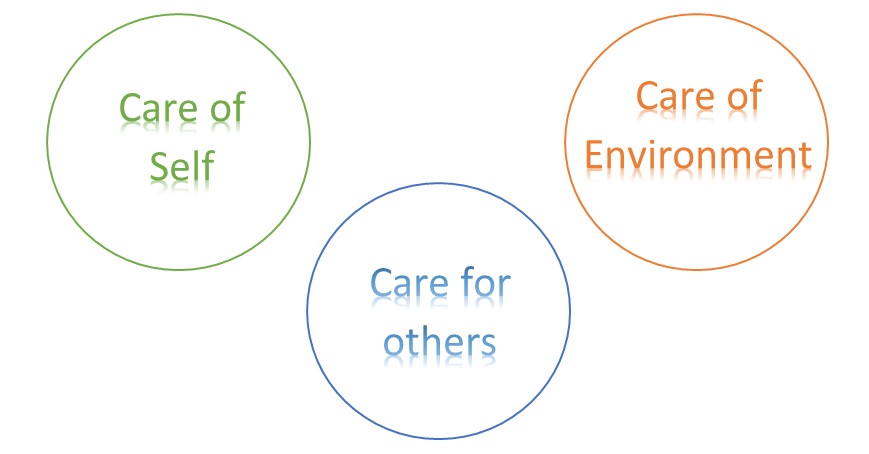
How do different Practical Life activities help the child?
1. CARE OF SELF
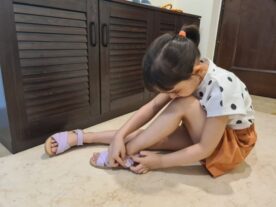 Getting dressed – dressing and undressing, buttoning shirts and closing zips require finer use of finger muscles and body balance and coordination. Children like to imitate adults and people around them. When they are able to accomplish these tasks, they feel proud. It also helps to increase concentration as they are trying to master new movements by doing it again and again.
Getting dressed – dressing and undressing, buttoning shirts and closing zips require finer use of finger muscles and body balance and coordination. Children like to imitate adults and people around them. When they are able to accomplish these tasks, they feel proud. It also helps to increase concentration as they are trying to master new movements by doing it again and again.
Preparing snack – cutting soft fruits, spreading butter on bread, rolling a chapati, pouring into a glass, serving food, etc. helps the child develop independence to help himself. This also sharpens their mathematical mind as they learn to compare quantities and learn to assess weight and temperature of things.
Eating – picking up food and putting into mouth involves hand-eye coordination and improved finger grip. Apart from the direct benefit of learning to eat on their own, it also helps them to exercise the tripod movement of fingers which is later required for writing.
2. CARE OF ENVIRONMENT
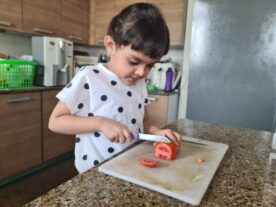 We have witnessed children being enthusiastic about dusting and mopping. Participating around the house with the adult brings a sense of belonging in them. When we show them how to put waste in the bin and clean spills, they are happy to do it themselves. They enjoy helping adults with food preparation and other chores around the house. Being able to do meaningful work and contribute at home gives them confidence. When children do real work, they develop self-regulation. They learn to make choices and correct their mistakes. When they also look at us doing any work from start to finish, it helps them absorb the logical steps and sequence involved in the process. These are the competencies required in all other academic areas of Math, Science and Language.
We have witnessed children being enthusiastic about dusting and mopping. Participating around the house with the adult brings a sense of belonging in them. When we show them how to put waste in the bin and clean spills, they are happy to do it themselves. They enjoy helping adults with food preparation and other chores around the house. Being able to do meaningful work and contribute at home gives them confidence. When children do real work, they develop self-regulation. They learn to make choices and correct their mistakes. When they also look at us doing any work from start to finish, it helps them absorb the logical steps and sequence involved in the process. These are the competencies required in all other academic areas of Math, Science and Language.
3. CARE FOR OTHERS
 Children like to take care of people around them. When they start learning to take care of themselves and their environment, they develop a sense of responsibility towards others and respect for their community and surroundings. Taking care of pets and animals also teaches them responsibility. Greeting others and letting others take a turn are all social skills that children emulate looking at elders. In a family environment, children learn to take care of guests and offer them snacks and other things. In a montessori classroom, children learn to walk and carry materials without disturbing other children who are working around. Children learn kindness and empathy by practicing all these activities.
Children like to take care of people around them. When they start learning to take care of themselves and their environment, they develop a sense of responsibility towards others and respect for their community and surroundings. Taking care of pets and animals also teaches them responsibility. Greeting others and letting others take a turn are all social skills that children emulate looking at elders. In a family environment, children learn to take care of guests and offer them snacks and other things. In a montessori classroom, children learn to walk and carry materials without disturbing other children who are working around. Children learn kindness and empathy by practicing all these activities.
ROLE OF ADULTS
It is necessary that we allow children to do what they are capable of. We must ensure things are available within their reach and sometimes objects must be child-size so they can handle it easily. For e.g., if they want to water plants, the watering can and water source should be accessible to them. If they want to clean after themselves, the sponge they would be using should be small so they can hold it comfortably. We also must be aware that a child might not be able to do the activity as good as adults, and therefore we should respect their ability and allow them to repeat when they want. Children will need some assistance depending on their age and ability. Gradually, they learn to be independent with practice.
Practical Life activities are part of everyday routine in a Montessori environment and given equal importance as all other subject areas. We have seen how they lay the foundation for education and all academic concepts like reading, writing, language and math. These fundamental activities or life skills develop self-esteem and self-discipline which are required for life-long success.

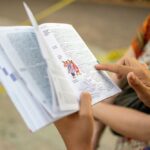

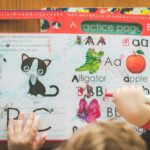
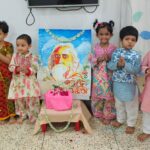
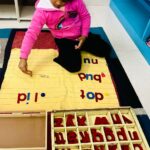
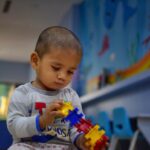
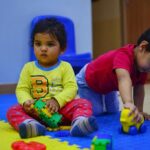
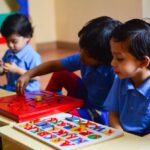
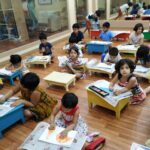
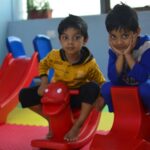
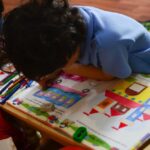
If children want to do activities we have teach them and encourage them.
A clear picture for parents and teachers about why EPL is necessary for children
My 2 years old toddler is constantly busy in helping us with household chores. He is such a hands-on kid. More then playing with his toys he loves helping us with all our work. Everytime he sees us doing any work, he actually leaves his toys n comes n starts helping us.
After reading the blog I m delighted.
Very informative article. It’s logically explained why practical life activities are important in early childhood. Also thanks for sharing so many examples which I can try out with my toddler.